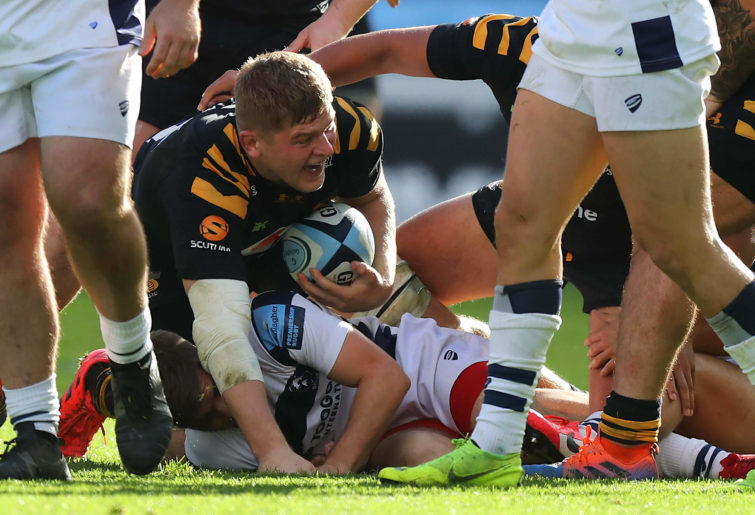Does anyone else remember the opening weeks of the Super Rugby Aotearoa rugby competition in 2020?
World Rugby’s new breakdown directives had not only been adopted with relish but for added measure New Zealand Rugby decided that sides would also have to be demonstrably onside in order not incur the wrath of the whistle.
The result was penalties galore, heaps of stoppages, more turnovers at the breakdown than you could shake a stick at and the big men of the forward packs struggling to get to rucks on time to legally affect their clean outs. I recall my very own Highlanders in Week 1 conceding as many ruck turnovers as we would in half a season.
Many were those without foresight, wailing, gnashing teeth and bleating for a return to the old ways. I am sure they are all writing pieces complaining about something else now.
Such was the disruption that in an interview Ben O’Keeffe said the referees association went back to NZR and the teams to ask if the ultra-strict application of the law was what they wanted. The response was ‘carry on as you have been. Our players and coaches will change, and the outcome is evident’.
In the northern hemisphere, in the English Premiership, there was a perhaps surprising show of solidarity with laws that would undoubtedly speed up the game, led by excellent referees like Luke Pearce.
The Premiership were having their own issues with the new directives as late arriving forwards to rucks still felt the need to contribute to a lost cause, indiscriminately flying off their feet into breakdown. The result was a riot of red and yellow cards accompanied by the expected bleating of ex-players telling all and sundry how it wasn’t like this in their day.
But the game quality in the Premiership is now light years ahead of where it was.

(Photo by David Rogers/Getty Images)
Having had a look at the New Zealand experience, it certainly looked like Rugby Australia blinked, took an entirely different approach to the directives by not wanting to trust the rugby public and apparently chose to ignore the new refereeing approach.
And thus, the teams and the players carried on as in past years: lots of players off their feet slowing the ball down, jacklers were rewarded when they had no chance of lifting the ball, sealing off when ball carriers are isolated, ball carriers neither placing the ball quickly nor correctly.
But most importantly, the pace of the Australian game stayed exactly the same when in every other comp in the world it was visibly increasing.
The change in game tempo is best illustrated looking at our northern counterparts. The Six Nations went from unwatchable to entertaining in a single year as first France and then Ireland, Wales and Scotland recognised the upside opportunities of ball movement under the new officiating.
We now have coaches in France and England using catch phrases like LQB (lightning quick ball) and KBA (keep ball alive). Surely that can only be a good thing for the sport, as opposed to past associated acronyms of PAG (pick and go) and TSW (try to stay awake).
And the issues of the late arriving inaccurate clean outs? They are not gone but massively improved in short order, because the associations and the referees did not relent. Players learn quickly when the downside is losing.
But back to our little corner of the world, eventually most closed societies end up having to have contact with the outside world and this is where the risk of things going pear-shaped crystallises and so it has been with Trans-Tasman rugby.
The breakdown is the singular most dominant part of our game with about 150 incidents per match, and shackled by the approach of the domestic competition, the Australian sides are visibly struggling in this critical element in a number of ways.

(Photo by Kai Schwoerer/Getty Images)
First, they are conceding turnovers on the ground for fun, at a ratio of more than 2-1 in the opening round and possibly worse in Week 2. The Highlanders picked off the Force by something like 10-1 on the ground by my admittedly biased count. The Crusaders totally neutered the turnover threat of Fraser McReight without having a recognised seven on the park.
Second, the decision making of the Australian Super Rugby sides of when to commit to a breakdown and when to leave alone has been poor.
But again, they are being faced with pictures at ruck time they simply have not been seeing in their domestic comp. Attempts to join to slow a ruck result in being a man short in the D line as the ball spits out the back of an attacking ruck.
Third and perhaps most importantly, when faced with sides who produce quick ruck ball, you need to be super flexible and rapid in your defensive organisation.
The pace of the NZ sides’ flat attack is something not seen in Australian Super Rugby for the last two years, and it’s almost impossible to adjust to in a couple of weeks. The conceded try count should surely be evidence enough.
All three elements will no doubt improve. Being in camp helps with that, but it’s a steep curve to climb in short order.
I genuinely feel for the players and coaches. If a trade off was made to not take a penalty deluge and likely resultant media and social media outcry last year, then 2021 Trans-Tasman has been, so far, the very expensive cost of that decision.
Get the best two Australian breakdown referees – that is Amy Perrett and Angus Gardner – into camp with the players as soon as possible, give them all printouts of the World Rugby directives, and get them to blow the pea out of the whistle at every training session until player behaviour changes.
It has to, because the rest of the rugby world has already moved on.































































































